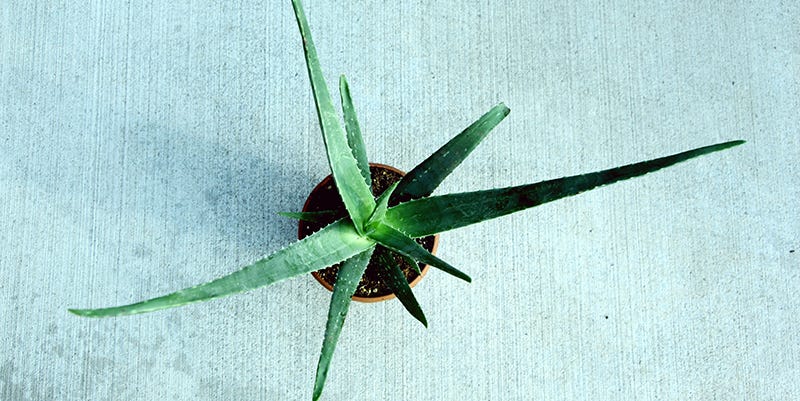

Getty ImagesSharon Pruitt / EyeEm
Fewer things in life are as pleasant as being wrapped head-to-toe in fresh aloe after spending the day in the sun. Yes, it’s a sticky, gooey consistency, but the immediate relief you get from the soothing plant is nothing short of heavenly.
I experienced this bliss when I recently visited Eforea spa at the Hilton Aruba. Aloe has been Aruba’s top export dating as far back as 1950, and the island’s Aruba Aloe Company was creating beauty products using aloe vera long before the ingredient started to dominate shelves at Sephora. If there was anywhere I could really see what the hype over aloe is about, it was Aruba, so I took advantage treatments like an aloe sun relief wrap, aloe vera, rum, and hot stone massage, and an aloe body scrub. After each euphoric session, my skin retained moisture better than ever and any dryness or redness I might’ve gotten from hanging by the beach was quickly remedied.
I learned that aloe doesn’t just feel good, it also goes deeper as a nutrient-packed skincare ingredient that helps lead to clearer skin long term. Ahead, I spoke to celebrity esthetician Renée Rouleau and Eforea spa’s Nunette Mudaro to find out what exactly makes this plant so efficient.
Aloe is rich in vitamins.
“It has polysaccharides that give hydrating, anti-inflammatory benefits and allow for aloe to give a protective barrier on the skin,” Rouleau explains. “Aloe also has phytosterols which help to soothe itchiness and irritation while also giving protection to prevent TEWL (trans-epidermal water loss.) Aloe vera gel has bioactive compounds in the plant that are rich in vitamins A, B , C, D and E as well as minerals like magnesium, potassium and zinc. These are all thought to aid in the ‘healing’ benefits of aloe.”
Aloe is ideal for sunburned or irritated skin.
“The aloe vera gel features cooling properties that can be soothing for skin that has been exposed to the sun for a long period of time,” Mudaro says. “In general, aloe can be used to reduce skin irritation and inflammations such as acne and eczema.”
Rouleau adds that on top of the cooling sensation, aloe replenishes burnt skin with vitamins and minerals. “A burn is an injury to the skin and it results in increased heat, irritation, water evaporation, and a tightness which creates an uncomfortable feeling,” she says. “Any kind of burn will create damage to the skin’s moisture barrier, and since aloe provides hydration, it can help repair the barrier more quickly.”
Aloe is perfect for DIY skincare.
Get yourself an aloe plant at home and the possibilities are endless. “Filet the aloe leaf and apply the clear gel directly to the face as a mask, ” Mudaro suggests. “Or extract the gel and make your own scrub. Our go-to DIY aloe recipe includes mixing aloe vera gel with olive oil and brown sugar. This can be used as an exfoliator to remove dead and dry skin.”
“If you’re using aloe vera gel, you can fill it into ice cube trays and freeze,” Rouleau says. “Then, whenever you need a source of cooling relief you can easily grab one and rub onto the inflamed area.” The esthetician also claims some people use aloe vera gel for shaving their legs. “Due to the consistency of a gel, it will ‘hug’ the skin nicely so a razor can go over the skin easily without causing irritation,” she says. “Plus, aloe vera will be significantly more hydrating and conditioning to the skin than a traditional shaving foam or bar soap.”
Aloe is as easy to apply as a serum.
“Since aloe from the plant has a high water content, you’ll want to use it as you would a skin serum,” Rouleau says. “Apply it to the face after cleansing and then follow with a moisturizer. A moisturizer will contain oil and occlusives that will ensure the aloe underneath will absorb into the skin.”
Aloe is effective for healing an old zit.
Say you got a blemish that you dried out with spot treatments and now you’re left with a scab. You can use fresh aloe on the dry area to help moisten the cells, Rouleau suggests. After applying aloe, “take the back of a spoon and hold it on the area for three minutes. Let dry and then apply concealer. Essentially, you are remoistening the dry cells and shaping them or ‘molding’ them flatter so it will be less noticeable,” Rouleau explains.
Be the first to comment